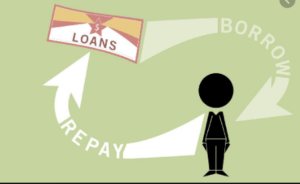What is Default Risk?
Default risk is the probability that a borrower is not able to make full and timely payments of principal and interest, hinged on the terms of the debt security involved. Apart from loss severity, it is one of the two areas of credit risk.

How to Assess Default Risk
It is always good to calculate a simple indicator of risk which considers a single default probability and loss severity. Although it is useful to consider the whole chian of potential losses and their probabilities. Note the indicator is known as expected loss and can be calculated thus:
Expected Loss = Default Probability × Loss Severity
Its score is quite a good step in checking state and corporate bonds. like credit default swaps (CDS). High-quality bonds come with low default rates, thus the score of default risk for such instruments is more important than the loss severity in the event of a default.
Thus, it is the key factor in the price and yield of financial tools. Higher default risk often tallies with higher interest rates, and issuers of bonds that carry higher risk will often find it hard to access capital markets. (this may affect finding potential).
Why Does Default, Risk Matter
It seems to be one of the most basic types of risk. This is because it shows the chance the investor will lose her money. Now all bonds, except for those issued by the U.S. government, come with some level of default risk. This explains why corporate bonds almost always have higher coupons than state bonds.
Payment Default
Payment default could occur because of some reason. Here they are:
- The counterparty may not want to accept the payment claim – repudiation
- The counterparty may stop issuing all payments for some time – Moratorium. Generally, this happened in the case of countries.
- There may be a default on the part counterparty on its loan obligation – credit default.
Types of Default Risk
Corporations and investments are rated by rating agencies to help gauge risk levels. Credit scores given by the rating agencies can be grouped into two groups: investment grade and non-investment grade (or junk). Investment-grade debt is seen to have a low risk and is most sought after by investors. On the other hand, non-investment grade debt offers higher yields than safer bonds, even though it also comes with a higher chance of default.
Even though the scales used by rating agencies slightly differ, most debt is graded the same. Any bond issue given a AAA, AA, A, or BBB rating by S&P is termed investment grade, while anything rated BB and below is termed non-investment grade.
Credit Rating Agencies
Credit rating agencies like Fitch Ratings, Moody’s Investors Services, and Standard & Poor’s all play a major role in the assessment of default risk. The rating agencies use almost the same, symbol-based ratings that summarize their assessment of a bond’s risk of default. Now, these agencies apply the ratings to all types of bonds, including corporate bonds, government bonds, government-related bonds, municipal bonds, supranational bonds, asset-backed securities, etc.
from WordPress https://ift.tt/3lJe5jP
No comments:
Post a Comment